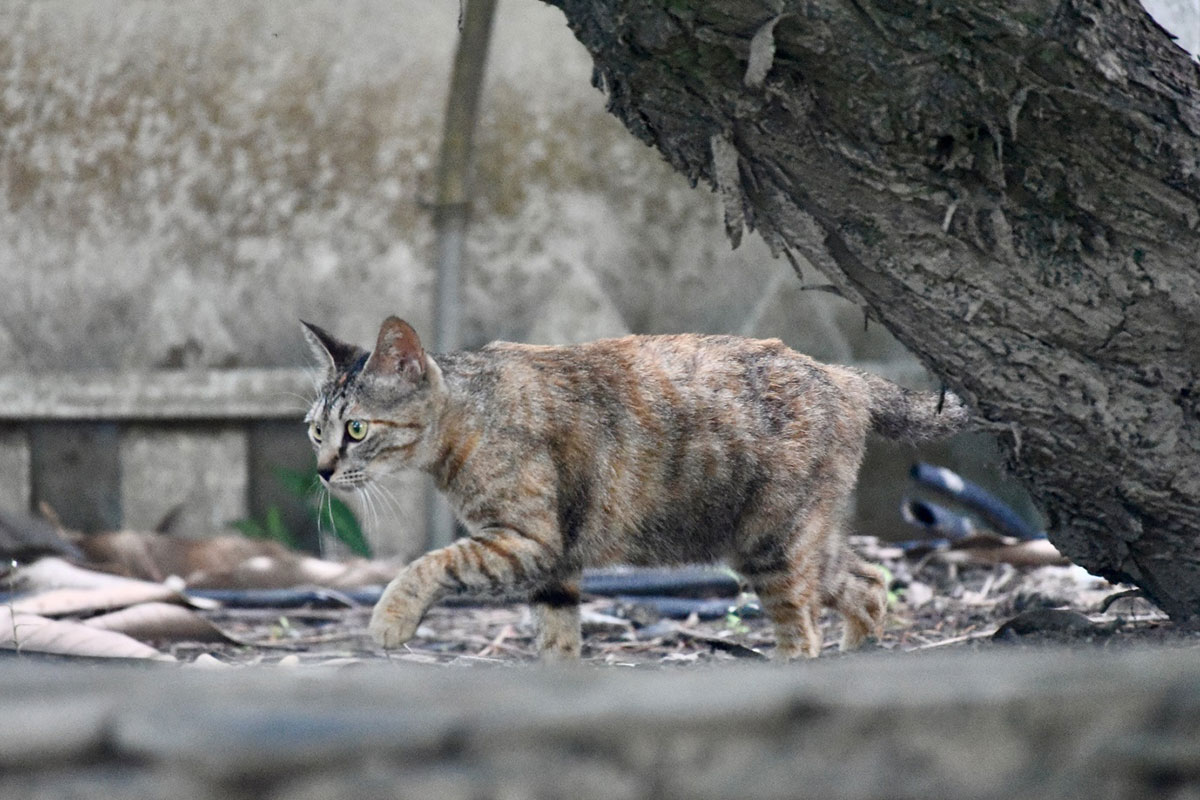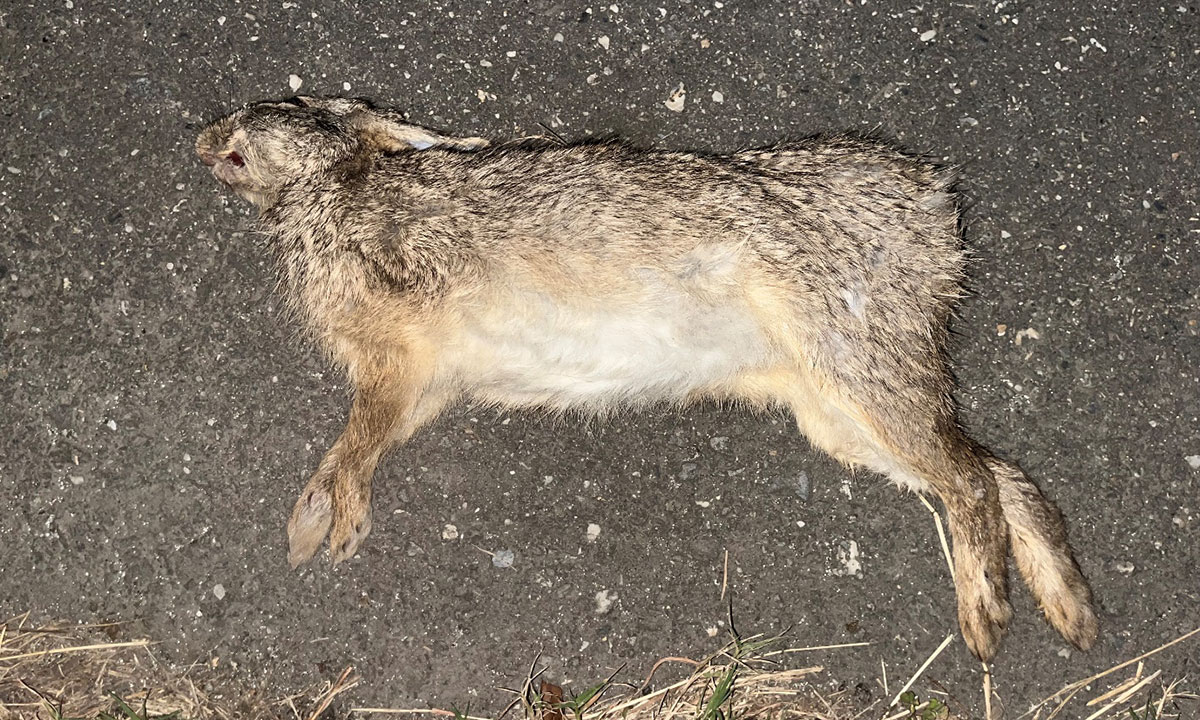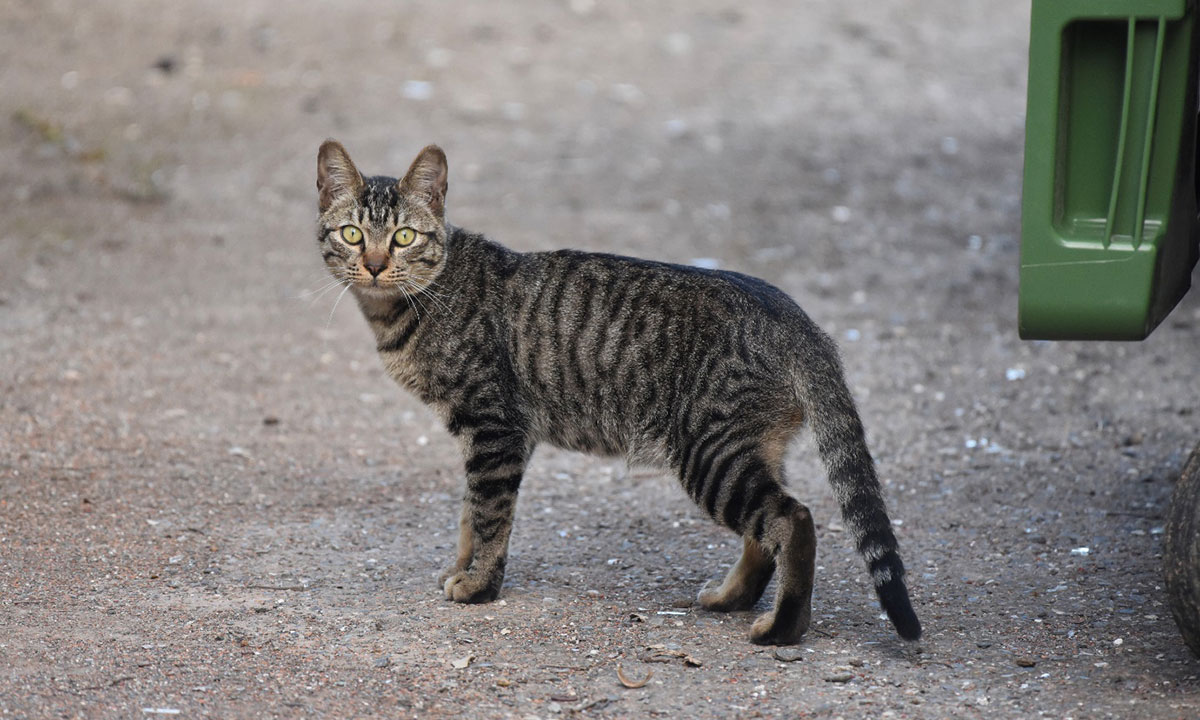
By Lin Yu-En
On a cold winter's night, my mother drove along the Hualien-Taitung Coastal Highway, returning to Taitung City from Changbin. I sat in the passenger seat, my mind drifting between thoughts of university exams and reports. My consciousness seemed to dissolve into the vast darkness, radiating outward. The northeast monsoon swept over the mountains and sea, enveloping everything in silence and cold. My body, the vessel of my awareness, floated and sank in the deep currents of drowsiness.
As we passed through a stretch of road where streetlights and cars were scarce, my senses plunged deeper into the darkness. The headlights were switched to high beam, cutting through the gloom. Suddenly, a cat darted across the road, right in front of the car. Startled, we slammed on the brakes, and the car swerved into the oncoming lane. A frail orange-and-white figure flashed under the headlights, slipping through a fence and disappearing without a trace.
Shaken but relieved that no cars were approaching, we resumed driving. After a short distance, I asked my mother to pull over. I had just remembered that the cat seemed to be holding something in its mouth—something that might have been dropped in the road. Driven by both curiosity and lingering shock, I felt compelled to check before I could truly relax. Stepping out with a flashlight, I searched the road. Without streetlights, my vision narrowed, sharpening my other senses. Every whisper of wind felt like an approaching car, heightening my anxiety. Even a few dozen meters felt like crossing several long seasons. At last, I found the object in the middle of the double yellow lines on the road.
To be precise, the object was a Formosan hare (Lepus sinensis formosus).
I moved it to the side of the road and crouched down to examine it closely. Its fur was intact, but its body was stiff, eyes shut, frozen in the posture of its final breath. I stared at this silent figure, imagining the life that once animated it. Nibbling tender leaves, slipping effortlessly past fences and ditches, ears tuned to the whispers of the earth, bounding nimbly at the foot of the Coastal Mountain Range—that’s how it should have been.

The hare's fur remained unscathed, but its body was stiff, eyes shut, frozen in the posture of its final breath.
My earliest understanding of hares came from Sam McBratney's picture book Guess How Much I Love You. In the story, the little hare and the big hare express their love by stretching their arms and leaping as high as they can, each trying to outdo the other in measuring their love. The book’s setting— a typical Western landscape of meadows and pastures— led me to naively believe that Taiwan, with its mountains and limited plains, could never be home to hares. I assumed the closest I might come to seeing hares would be their distant relatives from the genus Oryctolagus in pet stores.
A few summers ago, I found myself on a mountain, admiring the night view. Growing bored, I began searching for signs of life around me. Just as I focused on the delicate parentheses-like marking on the back of a Heymons' narrow-mouthed toad (Microhyla heymonsi), a glimmer caught my eye. In the flashlight’s beam, a pair of eyes gleamed from the bushes. A swift figure darted into view, and before I could whisper "hare," it vanished.
And yet, the hare lay before me now, unmoving and unresisting. It neither fled nor vanished. I wished it had been just a fleeting glimpse in the underbrush, so timid and elusive that it made you question its existence—rather than this intact body now left in our lives. I called my mother over, and after some discussion, we surmised that the cat we saw earlier was likely the cause of its death. Though the hare was larger and more robust, it couldn’t withstand the attack of a roaming cat. Given the cat’s hunting prowess, it's likely that other small mammals and birds in the area also fall prey to its threat.

Stray cats roam alone, unaccustomed to moving in packs, and their numbers remain unknown.
Stray dogs and cats have a profound impact on wildlife. A 2022 investigation by the Ministry of Agriculture revealed that Taiwan had approximately 159,000 stray dogs, but stray cats—who tend to roam solo rather than in packs—remain uncounted. While dogs often draw attention with their barking and chasing, the hunting skills of cats are more subtle but no less significant, and their effect on wildlife is frequently overlooked. Beyond targeting birds and small reptiles, a striking example occurred in May, when the Nantou County government reported that a stray cat had killed a leopard cat (Prionailurus bengalensis)—the first documented case of its kind in Taiwan. In unseen corners, well-fed stray cats, brimming with excess energy, continue to hunt wild creatures for sport.
The National Geographic website once showcased a powerful photograph titled "Caught by Cats" captured by photographer Jak Wonderly. At its center, a bird with outstretched wings was surrounded by 232 other birds, reptiles, and mammals—all victims of cat attacks. Though each had been taken to a veterinary hospital, none survived.
The animals in the photo were vibrant, stunningly beautiful—like a splendid dream from which no one would wake. If I placed this hare at the center and collected the remains of animals within a five-kilometer radius, I could create my own version of Taiwan's 'Caught by Cats.' I ought to blame that cat, accuse this invasive species of wantonly slaughtering the island’s native hares, of spreading viruses from companion animals to the wild. The evidence is irrefutable, the judgment clear; its crimes are too numerous to count. I recall how the media once described the seemingly brutal yet ultimately docile green iguana, using equally cruel language.
But can I truly, and with conviction, place the blame for one lost life on another—perhaps one that is also grappling with its own struggles?
If the brakes failed and the tires kept rolling, the white fur of that little orange cat would instantly be stained with blood, perhaps so much that the orange and white would blur together into a sticky mess, fused with the asphalt of the road. Yet in such cold weather, it should be nestled in a warm home, its fur smooth and clean, stretching its regal belly or curling contentedly on its owner's lap, purring or kneading with contentment—rather than nearly meeting its end beneath the wheels. With this thought, I suddenly found myself feeling uneasy.
Only when a soul truly steps into the center of our gaze do we realize how the issues we often neglect loom large and heavy before us. The hare before me seems to be running in a dream, yet it lies in silence forever. We encounter this once-leaping soul in such a sudden and shocking way, and I, arriving late to the scene, wonder—what attitude should I adopt to mourn its passing?I placed the hare beneath a pile of fallen leaves, and the song of Wu Tsing-fong slowly spiraled through my mind: “Sleep now, sleep now; awaken after a century, free from suffering.” We returned to the car, and the headlights flickered back to life, carving a clear path through the dark void. Occasionally, oncoming vehicles roared past, their headlights shifting between bright and dim like elusive, wandering eyes. The dashcam lit up, hinting at unknown beings ahead, unpredictable in how our encounters might unfold. We opened our eyes wide, cautiously navigating between light and shadow.
Author Profile
Lin Yu-En
Born in 2005 in Taitung, Lin Yu-En has a deep passion for birds, especially those seen from the front. A winner of multiple literary awards, she is dedicated to learning everything about them. Her accolades include the Taitung Girls' Senior High School Literature Award (2021), Houshan Literature Award (2021), and two consecutive National High School Literature Awards from the Wu-Ling Culture and Education Foundation (2022, 2023), as well as the TSMC Youth Literature Award (2023).
This piece is republished with permission from the WildOne Wildlife Conservation Association.




 中
中